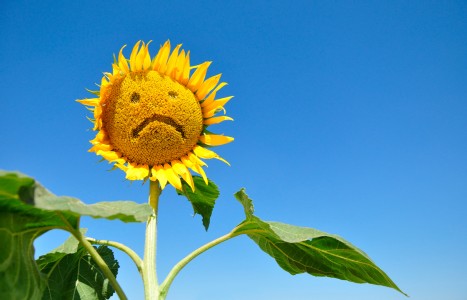Did any of you ever get the feeling in school that it simply was not OK to speak about wanting to be successful? To get into the nitty gritty details of how to make money in practice? Maybe you were even someone like me who was directly told by someone in a position of power that I needed to take what I could get because in private practice, I wouldn’t make money.
The Roots of TCM in Depression Treatment
In traditional Chinese medicine, there is historical precedent for the treatment of so-called "Shen" (Heart-Mind) disorder, or disorder/dysregulation of the spirit, which is also considered as distinct but not separate from the cognitive function of the brain. According to Dr. CQ Yang, PhD, LAc, in his self-published book Shen Disturbance, which takes a thorough look at how TCM approaches mental-emotional imbalance, the Nei Jing–Yellow Emperor's Classic (100-200 B.EV) is the first book to develop and discuss in an organized fashion the diagnostic theory and treatment of human Shen (Spirit) and its imbalances. He further states that it still is the most comprehensive elucidation of TCM Human Shen and its imbalance(s) in the lexicon to date. Dr. Yang has gone to considerable effort to translate the enigmatic, Chaucer-like Nei Jing Classic into the language and approach of modern TCM diagnosis and treatment.
A passage has been selected from the Yellow Emperor's Canon of Internal Medicine (Wu, 1997, pp73-75), which makes a connection from the Classical text to their TCM application in modern treatment.
"Yi Jing Bian Qi Lun" ("On the Therapy of Transferring Thought and Spirit"): Yellow asked, "I am told that in ancient times, when a physician treated a disease, he only transferred the patient's thought and spirit to sever the source of the disease. In nowadays, the patient is treated with drugs internally and acupuncture externally. Nevertheless, some of the diseases are cured, but some of them cannot be cured and why is it so?" Qibo answered, "In ancient times, people lived in the cave of the wilderness surrounded with birds and beasts, they drove away the coldness by motion of themselves, and evaded the hot summer by living in the shade. They had no burden in heart in admiring the fame and gain, and had no fatigue in the body for seeking a high position, thus, one can hardly be invaded by exogenous evil in this calm and plain environment. So, when one contracted disease, both drugs for curing inside and acupuncture for curing outside were not necessary, but only transferred the patients emotion and spirit to sever the source of the disease would be enough.

"But the case in nowadays is different, people are often bothered by anxiety in the heart inside, and hurt by the toil of the body outside, together with the careless[ness] of the patient to viol[ate]et the changing rule of the weather sequence of the four seasons, and the coldness and heat of morning and evening,[.] When the thief-evil invades unceasingly, the patient's viscera and bone marrow will be hurt inside, and the orifices and muscle will be hurt outside. If the disease contracted is a slight one, it will surely turn into a serious disease, if the disease contracted is a serious one, the patient will surely die. Therefore, the disease nowadays cannot be cured by severing the source of the disease only."
This selection applies to the investigation of depression treatment with TCM modalities by supporting the notion that treatment for any disease cannot be accomplished by "transference" alone but instead presents the idea that "nowadays" people need both herbal medicine and acupuncture for a complete course of treatment. From a historical sense, it's also interesting due to its "precognition" of both its view of "modern man," with his self-imposed stressors, anxieties, conflicts, which all contribute to increase his (or her) susceptibility to "invasion" by thieving evil qi's; and because of its reference to the use of so-called "transference" to treat disease.
The suggestion has been heard that the meaning or method of the term "severing by transferences" refers to a process of providing an explanation of their disease to the sufferer. Explanation is considered the treatment method through the process of a person receiving an explanation of their disease mechanism, and thereby a greater understanding of the cause and state of their disease, that knowledge will provide chiefly for the transference of their thought and spirit. Regarding the treatment of Shen disorder, this interpretation may be accurate and also does pay homage to the western bio-psychological paradigm.
The problem for us as English speakers is the exactitude of our language and how that generally leads to the condition where what is left out or unstated specifically is largely not said; whereas perhaps the Chinese pictogram is more richly descriptive of what is meant by "the transference of thought and spirit to sever the source of the disease." Perhaps since they could no longer successfully perform this method in the time of the Nei Jing, they had no idea what was entailed in that exact process or its meaning at that time. One may surmise, as has been stated in modern psychological theory, that thought makes the connection to the "disease source" and therefore the disconnection or severing of the thought from its "evil" source would be a complete healing process.
This transference method is, or was before the advent of bio-chemical therapy so prevalent today, similar to the standard technique of psychological care into the late 20th century. In most cases, involving the treatment of psychological disease today it also is no longer a matter of simply identifying the source of the problem to achieve successful therapeutic outcomes. Because of the time and expense involved in that "hands on" type experience, it is not easily managed due to such a great patient volume. Thus the great usage of synthesized drugs have become the standard of care.
Another example of classic Chinese diagnosis and treatment of mental-emotional conditions can be found in the book Medieval Chinese Medicine--The Dunhuang medical manuscripts. Chapter 15, by Chen Hsiu-Fen, entitled "Wind Malady as Madness in Medieval China," discusses the beginnings of the TCM concept of Wind pathogen (now still considered a primary etiologic factor in TCM). Wind developed over time from a strictly febrile-type disease-causing element into a multifaceted pathogen that could cause an array of conditions, including those which would now be called psychosomatic; it also included conditions thought of then (and now) as "madness," e.g., epilepsy.
Chen Hsiu-Fen primarily concentrates on one excavated manuscript from the Dunhuang cave library, Zhibing yaoming wenshu (Text Containing Pharmaceutical Nomenclature) by an unknown author. It is dated around the early Tang dynasty, not later than the reign of Emperor Tang Taizong (628-649 CE), but Chen suggests that from the types of herbal remedy and prescriptions found in the manuscript, elements of it may have been used "long before that time." The manuscript contains eighteen herb formulas that cure ailments caused by Wind, including "Fengdian" (Dian due to Wind), which may be the closest to our notions of depression but is now seen as more of what would be termed a depressive dissociative psychosis — the basis being that Wind attacks the head and therefore all the operations that go on inside or that involve interaction with the head. It was understood at that time that mental-emotional states had a relationship to the head and the working of its contents as well as the effects that could have influence on those workings.
Wind comes and goes quickly and it can penetrate through the upper orifices into the body organs (including the brain) wherein the various organ Shens (Spirit/Soul) reside and disturb them, thus causing possible abnormal psycho-spiritual-emotional reactions to occur, which may come and go in the same fashion as its causative pathogen, the Wind. The herb remedies are selected according to symptom manifestation. He quotes from a post Nei Jing book Zhu bing yuan hou lun (Treatise on the Origins and Symptoms of Medical Disorders) to disclose its notion that the various Wind diseases result when the qi (vital energy) and Blood (vital fluids) of the body are weak and can't defend against the attacking Wind pathogen; this theoretical treatment concept is carried over into the herbal formulas found in the Dunhuang manuscript.
The first part of the manuscript deals mainly with physical diseases of the head; the second part of the manuscript has formulas for treating different types of "madness" caused by Wind and includes three for depletion of Heart qi (the function/energy of the Heart). The classical medical theory regards the Heart as the organ that houses the primal Shen and is master of qi and blood. If qi and blood are deficient, then Wind-evil may invade, particularly in the case of "madness," the Heart channel. Among other reactions, it may cause fright and palpitation due to Wind, or Dian due to Wind. These are conditions of "disquieted Heart qi" because of invasion of Wind Evil into a "depleted heart." Herbs were prescribed for the different manifestations to build Heart qi and blood; since none were specifically mentioned for the treatment of FengDian they will be not included in this effort because they are largely known by TCM.
Chen concludes with the fact that a distinction was made within this manuscript and its herbal formulas between Wind-Evil "madness" conditions and demonic possession. Then, as now, the boundaries between them were not always clear, but it supplied other diagnostic remedies to treat that type of "affliction," which they understood as being different from the Wind generated types. This is used to point out the relative sophistication of their insights, diagnosis, and natural treatments of human mental-emotional states, giving all due consideration to the very human-ness of the sufferer, and without resorting to the for the most part brutal techniques in use in Western society to deal with "madness" centuries after this time. This contrast may stem from the different psycho-spiritual approaches to the human condition found in the Buddhist thought of this manuscript versus the concurrent Judeo-Christian approach.
Today, depression can be very difficult to treat and generally the standard of care is medication, possibly multiple medications. These medications may have strong side effects that can add other issues to the person's perception of wellness or stability. It may also create a bio-psychological dependence on them to maintain their mental status. In that sense, medication can lose effectiveness in the attempt to maintain or achieve efficiency and there may be a loss of compliance, with increased risk of a return to depressive syndromes. The danger of prolonged depression is that it may lead to thoughts of suicide or even serious suicidal attempts.
Our current solutions, particularly the general reliance on drug therapy, are not particularly successful because the treatments provided do not involve much in the way of comprehensive (e.g., mind-body-spirit) self-regulatory adjustments to be made by the sufferer. Therefore people can feel less involved in their treatment processes, each of which may be directed at only a partial facet of the whole person. In that sense their life is still happening to them instead of with them.
However, because of its literal "under the skin" nature and the need to cooperate with the TCM physician (which may include many acupuncture treatments, daily consumption of herbal formulas, exercise, possibly meditation, etc.) all these factors can contribute to a complex, collaborative process of self-care that may be able to build new attitudes, and with new attitudes, a new take on life may be achieved. This is an important distinction to make because TCM style care may require a higher level of participation between client and practitioner than even, for example, cognitive therapy with its emphasis on quick outcomes, or other current treatments, e.g., mostly drugs, offered within the standard of care.
Based upon the personal doctoral capstone project from '04 - '06 on electroacupuncture for depression, particularly the work of Luo H. et al. using 2 Hz on Yintang and DU20, that evidence-based protocol was subsequently introduced to people complaining of various mental-emotional conditions through student interns at several TCM school clinics in metro Los Angeles. Of course, not everyone is a candidate for electroacupuncture (EA) treatment, let alone acupuncture (A); but for those that are the attempt to use EA in their course of treatment is made, so far it has proven to be the most effective treatment for the widest number of people. Certainly other professionals that are willing to cooperate with our medicine i.e., the simultaneous treatment of mind, body and spirit, rather than the one at a time treatment offered by "specialists" of standard care, may be necessary, as it can be prudent to continue drug therapy until a tapering down is acceptable. Ultimately, perhaps the simple advice from the Nei Jing about returning to our original human nature may be the critical missing element for "nowadays" people in search of the elusive homeostatic condition.
References:
- Han, C., Li, X., Luo, H., Zhao, X., & Li, X. (2004). Clinical study on electro-acupuncture treatment for 30 cases of mental depression. J Tradit Chin Med, 24(3), 172-76.
- Lo, V., & Cullen, C. (Eds.). (2005). Medieval Chinese Medicine: The Dunhuang medical manuscripts. London & New York: RoutledgeCurzon.
- Luo, H. C., Jia, Y. K., Li, Z. (1985). Electro-acupuncture vs. amitriptyline in the treatment of depressive states. J Tradit Chin Med, 5(1), 3-8.
- Luo, H., Jia, Y., Feng, X., Zhao, X., Tang, L. C. (1995). Advances in clinical research on common mental disorders with computer controlled electro-acupuncture treatment. Adv Exp Med Biol, 363, 109-22.
- Wu, N. L., & Wu, A. Q. (1997). Yellow Emperor's Canon of Internal Medicine. China Science & Technology Press. 73-75.
- Yang Ph.D L.Ac., J. C. (2005). SHEN DISTURBANCE: A Guideline for Psychiatry In Traditional Chinese Medicine. desktop.



